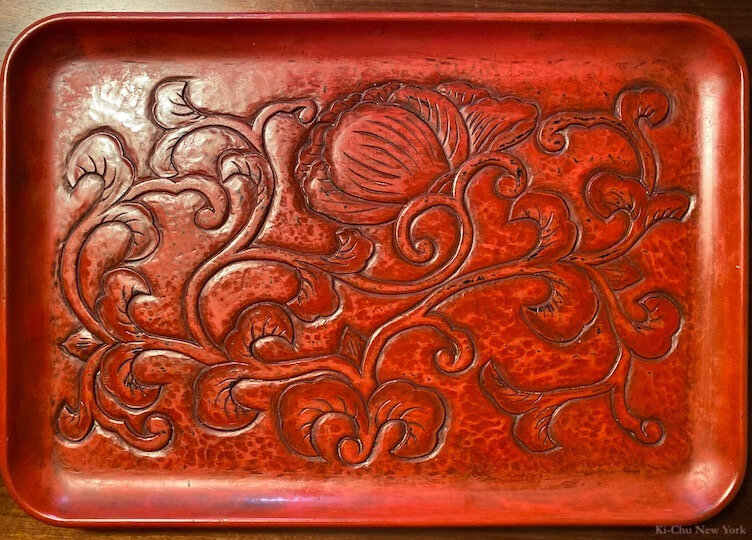Dear friends,
Last month I talked about my mother's hobby the Kamakura-bori tray in this newsletter. Kamakura-bori is commonly known as a slightly masculine style of craft; so if you're familiar with the conventional pieces, you may not think this plate is genuine Kamakura-bori. Please observe that all the lines extending toward the inside are very straight and meet beautifully in the center of the piece. The design is sharp, delicate, and modern; moreover, it still keeps the impression of bold strength typical of Kamakura-bori. This is made by Hakkodo which is the oldest store of Kamakura-bori.
Many people are not aware that Kamakura-bori originated from Buddhist sculptors 800 years ago when Zen Buddhism was first introduced to Japan from China. Next month the virtual exhibit, "An Art Progression from Buddhist Carving to Urushi ware, Kamakura-bori" will be held at the Japan Society. You will learn about history and how to survive through turbulent times. I benefited immensely from this history and it helped me through the challenge while I was working on this exhibit. We may all be encouraged by this history that helped so many through difficult times similar to what we are now experiencing in our society. This will soon be announced. Please stay tuned.
Best,
Kumiko
Edited by Janice Ensminger

